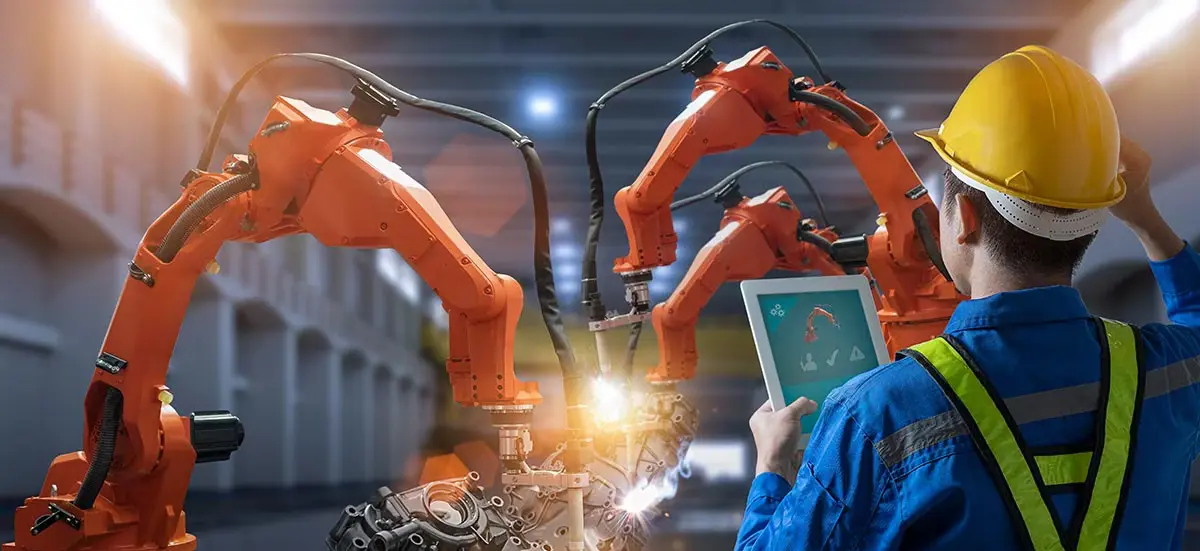Looking for an efficient and cost-effective solution to automate welding tasks? Consider the innovative technology of collaborative robots, or cobots. Cobots combine robotic arm functionality with intuitive programming interfaces that enable them to work side-by-side with human operators in shared workspaces. With a range of capabilities including precision molds, arc welding, laser cutting, and more – cobot automation has quickly advanced from developing prototypes to providing industrial solutions appropriate for a wide variety of applications. Learn how cobot welding impacts safety as well as productivity – read on!
Benefits of Using a Cobot for Welding Automation
Welding automation is a game-changer in the manufacturing industry, allowing for faster and more efficient production processes while also reducing the risk of human error. The use of collaborative robots, or cobots, in welding automation has provided even more benefits for manufacturers. Cobots are designed to work alongside human operators, ensuring safety and improving the overall quality of production. With their compact size and programmable features, they can be easily integrated into existing systems and can handle a range of welding applications. By automating welding with cobots, manufacturers can experience increased productivity, improved product quality, and reduced costs associated with labour and errors. The future of welding automation looks bright with the implementation of cobots.
Advantages and Disadvantages of Cobots in Manufacturing
Cobots, also known as collaborative robots, have become increasingly popular in the manufacturing industry due to their ability to work alongside human operators. One major advantage of cobots is their flexibility in performing various tasks, including hazardous jobs that may be dangerous for humans. Another advantage is their ease of use and ease of programming, allowing for quick implementation and adaptation to changing production needs. However, cobots also have their disadvantages. Higher upfront costs can deter some manufacturers, and the need for proper training and safety measures must be thoroughly addressed to prevent accidents. Overall, while cobots can offer significant benefits, careful consideration and planning must be taken to effectively integrate them into manufacturing processes.
What to Look for When Shopping for a Cobot Welder
When it comes to shopping for a cobot welder, there are a few key factors to consider. First and foremost, you want to ensure that the cobot is compatible with the welding process you need it for. Additionally, you should look at the robot’s payload capacity and reach to ensure it can handle the size and weight of your parts. Another important consideration is ease of programming, as you’ll want a cobot that can be quickly and easily programmed for different welding tasks. Finally, safety features are critical, especially when dealing with high-temperature welding processes. By focusing on these key features, you can find a cobot welder that meets your needs and helps improve the efficiency of your welding operations.
In conclusion, collaborative robot welding brings automation to the manufacturing world while retaining crucial worker safety. Cobots are well-suited for many welding and manufacturing tasks as they can be programmed to complete more complex tasks than traditional robots. They are lighter and cheaper than their stationary counterparts, making them easier to deploy in the workspace. Furthermore, cobots have been used in many industries such as aerospace, automotive, and medical implants, allowing manufacturers to experience benefits including increased production speed, improved accuracy and repeatability of welds, lower labor costs and fewer weld defects. When investing in your first cobot welder, it is important to consider a few key features such as size/reach restrictions, ease of programming, safety compliance protocols and machine reliability. By doing so, you’ll ensure that you get exactly what you need from your cobot that meets both industry production standards and workforce needs for the future. For more information visit Cyber-Weld

